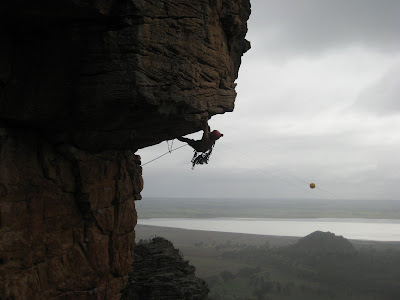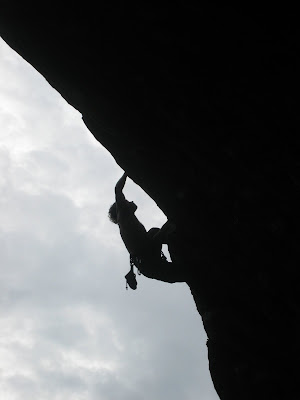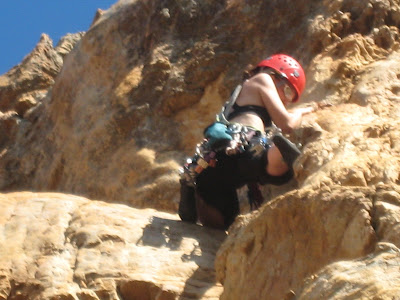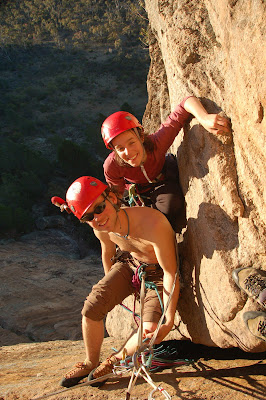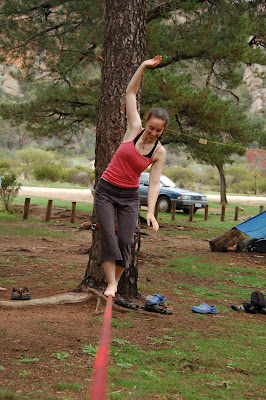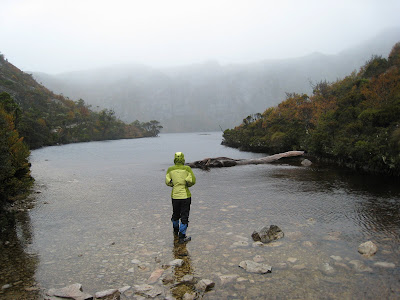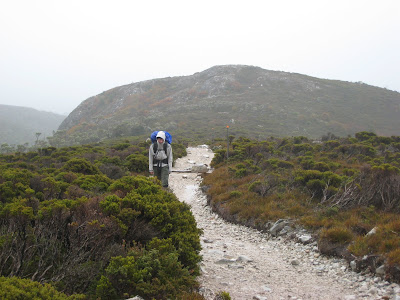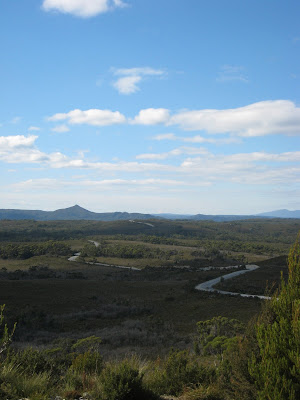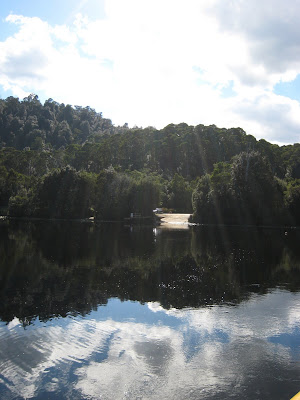With the pillaged remains of vacated campers' gear and food, two extra passengers and a fresh coat of mud sprayed across our belongings, the 15 hour ride to the Blue Mountains might as well have been a caving expedition. The moldy aroma and our cramped, shallow breathing all proved worth it when we realized that we'd transported the perfect guide for the Blueys. We were quickly schooled on free camping locations, cheap meal opportunities, and great climbing areas. Trying to make the most of June's chilly, short days, we gobbled up as many steep sport routes as possible.
We learned that the Blue Mountains are as breathtaking as the climbing porn in the guidebook suggests, we learned the ways of the carrot bolt, we learned to appreciate worry-free sport climbing again after so many harrowing trad experiences at Araps...
...and we learned that traveling north does not always rescue you from the rain...

